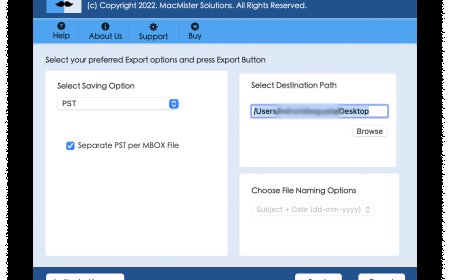How to Find Pipe Ceremony Events
How to Find Pipe Ceremony Events The pipe ceremony, deeply rooted in Indigenous traditions across North America, is a sacred ritual that embodies prayer, community, and spiritual connection. For many, participating in or witnessing a pipe ceremony is a profound experience that fosters understanding, healing, and respect for ancestral ways. However, finding authentic pipe ceremony events can be cha
How to Find Pipe Ceremony Events
The pipe ceremony, deeply rooted in Indigenous traditions across North America, is a sacred ritual that embodies prayer, community, and spiritual connection. For many, participating in or witnessing a pipe ceremony is a profound experience that fosters understanding, healing, and respect for ancestral ways. However, finding authentic pipe ceremony events can be challenging for outsiders—especially those unfamiliar with Indigenous protocols, cultural sensitivities, or geographic access to ceremonies. This guide provides a comprehensive, respectful, and practical roadmap for individuals seeking to locate and ethically engage with pipe ceremony events. Whether you are a spiritual seeker, a student of anthropology, a cultural ally, or someone drawn to Indigenous wisdom, understanding how to find these events with integrity is essential.
It is critical to begin with a foundational truth: pipe ceremonies are not performances, tourist attractions, or commercial products. They are living, breathing spiritual practices passed down through generations, often held in private or semi-private settings under the guidance of ceremonial leaders. To find them, one must approach with humility, patience, and a deep commitment to cultural reciprocity—not curiosity alone. This guide will walk you through the ethical, practical, and spiritual steps necessary to locate pipe ceremony events while honoring the sovereignty and traditions of the communities who uphold them.
Step-by-Step Guide
Understand the Cultural Significance Before Seeking
Before you begin searching for pipe ceremony events, invest time in learning what the ceremony represents. The sacred pipe, often called the chanunpa in Lakota traditions, is not merely an object—it is a living entity that carries prayers to the Creator. Different Nations have their own variations: the Ojibwe, Cheyenne, Crow, and other Plains and Woodland tribes each have unique protocols, songs, and meanings attached to their ceremonies.
Read foundational texts such as “The Sacred Pipe” by Black Elk and Joseph Epes Brown, or “The Way of the Sacred Pipe” by Edward Davis. These works offer insight into the cosmology, symbolism, and spiritual intent behind the ceremony. Understanding the context prevents superficial engagement and prepares you to recognize authentic invitations versus exploitative or inauthentic events.
Also, recognize that not all Indigenous people practice or publicly share these ceremonies. Many elders and keepers choose to hold ceremonies only within their families or communities. Respect this boundary—it is not a lack of openness but a sacred responsibility.
Build Relationships with Indigenous Communities
Authentic access to pipe ceremonies is rarely found through online searches or event listings. It is earned through long-term, respectful relationships. Begin by identifying local Indigenous communities near you—whether urban or rural. Reach out to tribal cultural centers, Native American organizations, or Indigenous-led nonprofits. Attend public educational events: powwows, storytelling circles, language revitalization workshops, or art exhibits.
Do not approach with the expectation of being invited to a ceremony. Instead, show up as a learner. Volunteer your time. Offer skills—graphic design, translation, event coordination—that support community initiatives. Listen more than you speak. When you are invited to participate in a non-sacred gathering, accept graciously and reciprocate with gratitude, not demands.
Over time, if you demonstrate consistent respect, humility, and reliability, you may be gently guided toward opportunities to witness or participate in ceremonial life. This process can take months or years. There are no shortcuts.
Learn the Protocol for Requesting Participation
If you have built trust and feel called to inquire about attending a pipe ceremony, do so with extreme care. Never ask directly: “Can I attend a pipe ceremony?” Instead, express your sincere interest in learning and your commitment to honoring tradition. You might say:
“I have spent time learning about the sacred pipe and its meaning in your culture. I hold deep respect for this tradition and would be honored to understand how I might support your community in ways that align with your teachings. If there is ever an opportunity to be present in a ceremonial space as a respectful observer, I would be deeply grateful for your guidance.”
Be prepared for a “no.” Many keepers will decline invitations to outsiders, and that is not a rejection of you—it is a protection of sacred knowledge. Accept this response with grace. Do not press. Do not ask again. The right opportunity will come only when the ceremony holders deem it appropriate.
Follow the Guidance of Elders and Knowledge Keepers
If you are invited to a ceremony, listen carefully to the instructions given by the host or elder. These may include:
- Wearing specific clothing (often modest, natural fibers, no synthetic materials)
- Bringing an offering (tobacco, cloth, food—never money)
- Arriving early and remaining silent until invited to speak
- Not taking photographs or recording audio
- Not asking questions during the ceremony
- Leaving personal electronics outside the ceremonial space
Each community has its own rules. Even within the same Nation, protocols can vary by family or region. The key is to follow without question. Your presence is a gift; your compliance is an act of reverence.
Verify the Authenticity of the Event
Unfortunately, some individuals and organizations outside Indigenous communities offer “pipe ceremony experiences” for profit. These are often staged, culturally inaccurate, and harmful. They misrepresent sacred practices as spiritual tourism. To avoid these, ask yourself:
- Is the event hosted by a recognized Indigenous elder or community organization?
- Are the leaders named and affiliated with a specific Nation?
- Is there a clear statement about the purpose being cultural preservation, not entertainment?
- Is there no fee for attendance? (While donations may be accepted for materials, no one should charge for the ceremony itself.)
- Are participants asked to sign confidentiality agreements?
If any of these red flags appear, step away. Authentic ceremonies are not advertised on Eventbrite, Facebook ads, or wellness retreat websites. They are shared through word of mouth, within trusted networks, and only when the spirit moves the keepers to invite others.
Use Community-Specific Resources
Instead of relying on generic search engines, engage with Indigenous-specific platforms and directories:
- Visit the websites of tribal nations in your region. Many have cultural departments with public calendars.
- Follow Indigenous-run social media accounts that share community events (e.g., @IndigenousX, @NativeWisdom, @NATIVEAMERICANS).
- Subscribe to newsletters from organizations like the National Indian Child Welfare Association (NICWA) or the American Indian College Fund.
- Attend regional gatherings such as the Gathering of Nations (Albuquerque) or the Native American Heritage Month events hosted by museums or universities with strong Indigenous programs.
These sources often list public cultural events—some of which may include pipe-related teachings, though rarely the full ceremony. They are stepping stones to deeper connection.
Respect Geographic and Spiritual Boundaries
Some ceremonies are tied to specific lands—sacred mountains, rivers, or burial grounds. These places are not accessible to the public, even if you are invited to a nearby community. Never attempt to locate or visit a ceremonial site without explicit, repeated permission from the community that holds stewardship over it.
For example, the Black Hills (Paha Sapa) are sacred to the Lakota, and ceremonies held there are not open to outsiders. Similarly, the Medicine Wheel sites in Wyoming or the ceremonial grounds of the Hopi are protected by strict cultural laws. Your presence, even with good intentions, can be a violation.
Focus on building relationships with communities in your own region. You do not need to travel to “authentic” locations. Sacredness exists wherever the people carry the tradition.
Best Practices
Honor the Principle of Reciprocity
In Indigenous cultures, giving and receiving are balanced. If you are invited to a ceremony, bring an offering—not as payment, but as a gesture of gratitude. Common offerings include:
- Hand-rolled tobacco (preferably organic, unfiltered)
- Handmade cloth or blankets
- Food that is prepared with care (e.g., cornbread, wild rice, berries)
- Handwritten letters of appreciation
Never offer money. It is not currency in spiritual exchange. If you wish to support the community financially, do so separately through a donation to their cultural fund or educational initiative—with no expectation of return.
Practice Silence and Observation
During a pipe ceremony, silence is sacred. Do not speak unless invited. Do not move unnecessarily. Do not look around. Your presence is not about you—it is about the prayers being carried through the smoke. Sit still. Breathe. Listen with your whole being.
Many participants report that the most powerful moments are not the songs or the words, but the stillness between them. Cultivate patience. Allow the ceremony to unfold in its own time.
Do Not Share Details Publicly
Even if you are permitted to attend, never post photos, videos, or detailed descriptions of the ceremony online. Do not name the location, the leader, or the specific songs. Do not describe the order of events. These are not secrets to be revealed—they are sacred teachings entrusted to you.
Sharing publicly violates the trust placed in you and can cause harm to the community. If you feel compelled to write about your experience, focus on your personal growth, your respect for the tradition, and your commitment to learning—not the ritual itself.
Support Indigenous-Led Initiatives
One of the most powerful ways to honor pipe ceremony traditions is to support the communities who preserve them. Purchase art and crafts directly from Indigenous artists. Donate to language revitalization programs. Advocate for Indigenous land rights. Attend public lectures by Native scholars. Amplify Indigenous voices on social media.
These actions build bridges of solidarity. They show that your interest in the pipe ceremony is not isolated—it is part of a broader commitment to justice and cultural survival.
Be Patient and Humble
The journey to witness a pipe ceremony is not a destination—it is a transformation. Many seekers spend years waiting, learning, and serving before they are invited. That is not a punishment. It is preparation.
Let go of timelines. Let go of expectations. Let go of the need to “have the experience.” True spiritual connection cannot be forced. It arises when the heart is ready and the community deems it safe to share.
Understand That Not Everyone Is Called
It is possible—and even honorable—to never attend a pipe ceremony. That does not mean you are unworthy. It means you are meant to walk another path. Some are called to be allies. Others to be teachers. Others to be healers in different ways.
Respecting boundaries is a sacred act. Choosing not to enter a space you are not invited into is a form of spiritual maturity.
Tools and Resources
Books for Deepening Understanding
- The Sacred Pipe by Black Elk and Joseph Epes Brown
- The Way of the Sacred Pipe by Edward Davis
- Native American Spirituality by Edward C. Kennedy
- Indigenous Wisdom for Living Well by Robin Wall Kimmerer
- The Four Sacred Gifts by Anita Sanchez
These books are not manuals for performing ceremonies—they are invitations to understand the worldview that gives rise to them.
Organizations That Support Cultural Preservation
- National Congress of American Indians (NCAI) – Advocacy and public resources
- Native American Rights Fund (NARF) – Legal support for cultural sovereignty
- Indigenous Environmental Network (IEN) – Environmental and spiritual stewardship
- First Peoples Fund – Supports Indigenous artists and cultural practitioners
- Native American Heritage Association – Educational outreach and community programs
Visit their websites to find events, volunteer opportunities, and educational materials. Many offer public webinars, workshops, and cultural exchange programs.
Online Platforms for Ethical Engagement
- Native Land Digital (native-land.ca) – Maps Indigenous territories and languages
- Indigenous Canada (University of Alberta, free MOOC on Coursera) – Comprehensive course on Indigenous history and perspectives
- First Nations Development Institute – Resources on community-led initiatives
- Reclaiming Native Truth – Research and storytelling projects by Native leaders
These platforms are not gateways to ceremonies, but they are essential tools for building cultural literacy and ethical awareness.
Local Resources to Explore
Check with:
- University anthropology or Native studies departments
- Local museums with Indigenous collections (e.g., Smithsonian’s National Museum of the American Indian)
- Public libraries with Indigenous literature sections
- Community centers that host Native cultural nights or storytelling circles
Many of these institutions have staff who can connect you with local Indigenous leaders—not to arrange ceremonies, but to guide you toward ethical learning opportunities.
How to Identify Authentic vs. Inauthentic Events
Use this checklist:
| Authentic | Inauthentic |
|---|---|
| Hosted by a recognized Indigenous elder or community | Hosted by a non-Indigenous “spiritual teacher” or wellness coach |
| No admission fee; donations accepted for materials | Requires payment to attend |
| Focus on prayer, community, and tradition | Focus on “spiritual healing” or “energy work” for personal gain |
| Participants are asked to remain silent and respectful | Encourages selfies, social media posts, or sharing details |
| Location is private, home-based, or on tribal land | Location is a hotel, retreat center, or rented hall |
| Only announced through trusted networks | Advertised on Facebook, Instagram, or Eventbrite |
If any of the “Inauthentic” traits apply, walk away. Your safety and the integrity of the tradition are at stake.
Real Examples
Example 1: A Student’s Journey in Minnesota
Jessica, a college student studying environmental science, lived near the White Earth Reservation in Minnesota. She attended a public powwow and spoke respectfully with an Ojibwe elder who was selling handmade beadwork. Over the next year, she volunteered at the tribal language immersion program, helping transcribe oral histories. She never asked about ceremonies.
After 14 months, the elder invited her to a small gathering at his home to share tea and stories. Months later, he asked if she would help prepare tobacco for a family ceremony. She did, quietly and without fanfare. One winter evening, she was invited to sit in the circle—not to participate, but to witness. She did not speak. She did not record. She left with gratitude.
Years later, she wrote a thesis on the relationship between land stewardship and ceremonial practice—not as an insider, but as a witness who honored boundaries.
Example 2: A Non-Native Artist in New Mexico
David, a painter from Arizona, wanted to depict the pipe ceremony in his art. He spent two years attending public art shows hosted by the Pueblo communities. He bought work from local artists, paid fair prices, and wrote thank-you notes. He never asked to attend a ceremony.
One day, a Hopi elder invited him to help clean the ceremonial kiva before a seasonal ritual. David spent a week helping with chores, bringing clean water, and sitting quietly. He was not allowed to enter the kiva. But he was allowed to paint the landscape outside it—under the elder’s guidance.
His paintings now hang in a university gallery with a plaque that reads: “Created with permission and guidance from the Hopi people. No ceremonial details were depicted.”
Example 3: The Misguided Retreat
A wellness center in Colorado advertised a “Sacred Pipe Ceremony with Native Wisdom” for $450 per person. The facilitator was a white woman who claimed to have been “initiated by a Lakota grandmother.” No tribal affiliation was listed. Attendees were encouraged to post photos with the pipe on Instagram.
Within weeks, Lakota elders issued a public statement condemning the event. They explained that the pipe had been misrepresented, the songs were fabricated, and the entire experience was a violation of sacred trust. The retreat was shut down.
This example underscores the harm caused by cultural appropriation. It is not just unethical—it is spiritually dangerous.
Example 4: A Community’s Quiet Gift
In rural Wisconsin, a Menominee family held a private pipe ceremony for their community after a loss. A non-Native neighbor, who had helped rebuild their home after a fire, was quietly invited to sit outside the tipi with a cup of tea. He was not part of the circle. He was not asked to pray. But he was allowed to be present in the space, as a witness to grief and healing.
He never spoke of it. He never shared it. He simply continued to show up—bringing firewood, helping with harvests, listening. Years later, he was given a hand-carved pipe as a gift—not because he attended a ceremony, but because he lived with integrity.
FAQs
Can I attend a pipe ceremony if I’m not Indigenous?
Some ceremonies are open to non-Native guests, but only if invited by the community or keeper. These invitations are rare, earned through long-term relationship-building, and never guaranteed. Do not assume you are entitled to attend.
Is it okay to pay for a pipe ceremony?
No. Sacred ceremonies are not for sale. If someone is charging for access, it is not an authentic event. Paying undermines the spiritual nature of the practice and supports exploitation.
What if I feel called to the pipe ceremony but can’t find one?
Feeling called is a sign of deep spiritual awareness. That calling may be guiding you toward service, study, or quiet reflection—not necessarily attendance. Focus on learning, supporting Indigenous communities, and living with integrity. The ceremony will come when the time is right—if it is meant for you.
Can I bring my own pipe to a ceremony?
Never. The pipe is not a personal object to be used casually. If you are invited to a ceremony, the pipe will be provided by the keeper. Bringing your own is disrespectful and potentially dangerous.
How do I know if I’m being culturally appropriative?
Ask yourself: Am I taking something without permission? Am I profiting from it? Am I sharing details publicly? Am I centering myself instead of the community? If the answer is yes, you are appropriating. True respect means stepping back when needed.
Are there virtual pipe ceremonies I can join?
No. Pipe ceremonies are deeply physical, sensory, and communal experiences tied to land, breath, and presence. Virtual events claiming to offer this are inauthentic and disrespectful.
What should I do if I accidentally attend an inauthentic ceremony?
Leave respectfully. Do not share your experience online. Educate yourself about what went wrong. Support authentic Indigenous-led initiatives to make amends. Silence and learning are your next steps.
Can I learn the songs or prayers of the pipe ceremony?
Only if you are formally invited to do so by a keeper. Songs and prayers are not public knowledge. They are inherited, taught in context, and protected for the good of the people. Do not seek to collect them.
Conclusion
Finding a pipe ceremony is not about searching—it is about becoming. It is not about access, but alignment. The sacred pipe does not belong to those who seek it out of curiosity. It belongs to those who live with humility, who serve without expectation, and who honor the silence between the notes.
This guide has offered practical steps, ethical frameworks, and real-world examples to help you navigate this path with integrity. But the most important lesson is this: the ceremony will find you when you are ready—not when you are eager.
Let your journey be one of listening. Let your presence be one of service. Let your heart be one of gratitude, not possession.
The smoke rises. The prayers are carried. The land remembers. And those who walk with respect—those who wait, who serve, who honor boundaries—are the ones who truly receive the gift.
Do not rush. Do not force. Do not claim. Simply be. And when the time is right, you will know.





























